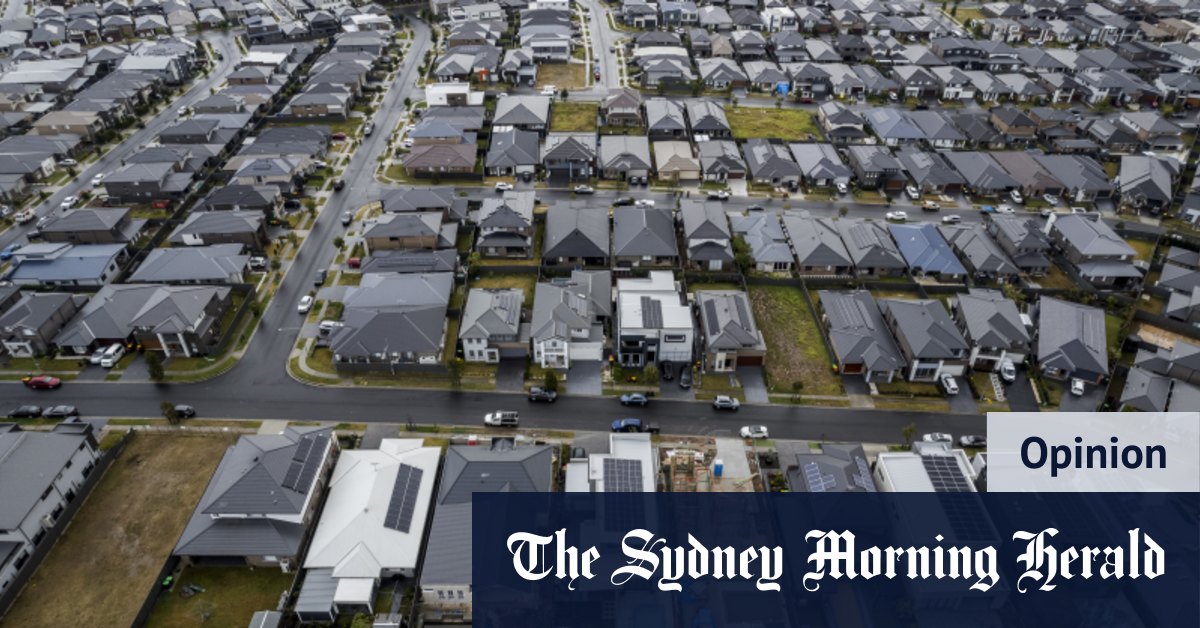
You might remember that at first it looked like COVID-19 would cause huge amounts of wealth destruction. Sharemarkets tumbled and some warned of the potential for house prices to plunge by a third.
Average household wealth did fall 3 per cent in the March quarter of 2020 when COVID-19 first struck, but this was only a blip, and asset prices quickly rebounded as central banks cut interest rates to near zero and governments pumped in huge amounts of stimulus.
More generally, the fact remains that wealth is still very unevenly shared in this country, notwithstanding that slight decline in wealth inequality during the pandemic years.
The report points out that despite the early 2020 hiccup, average household wealth subsequently surged by 12 per cent to December 2020, and a massive 26 per cent to December 2021.
No prizes for guessing the biggest cause of this surge: housing, which drove 69 per cent of the overall increase in wealth during these three years.
Most of this came from owner-occupied housing, which contributed 55 per cent of the increase, and investment property contributing 14 per cent. Superannuation contributed 16 per cent of the increase in wealth.
This boom in asset prices is pretty straightforward, but how were these gains distributed? This is where things start to get more complicated.

Wealth inequality narrowed slightly in the pandemic, but has widened over the longer term.Credit:Matt Davidson
ACOSS reports that, surprisingly, the latest surge in house prices caused a modest decline in wealth inequality. It measures inequality by dividing the population into a few groups: the richest 10 per cent; the next 30 per cent, known as the “comfortable middle”; and the lower 60 per cent of the population.
It says that during the first two years of the pandemic (2019-20 and 2020-21), the least wealthy 60 per cent actually saw their average wealth rise by 16 per cent, which was a bigger percentage increase than the richest 10 per cent experienced.
Huh? Why would rising house prices cause wealth inequality to decline? Because owner-occupied housing is more evenly distributed across the population than other assets, such as shares or investment properties.
Beyond this surprising trend, however, the report points out there has also been an obvious social cost to surging house prices. This is that many younger people and lower-income earners are increasingly locked out of the housing market, and this is reflected in declining rates of home ownership, as shown in the recent census.
Loading
More generally, the fact remains that wealth is still very unevenly shared in this country, notwithstanding that slight decline in wealth inequality during the pandemic years.
The long-term trend since early this century has been towards the wealthiest people owning a bigger share. For example, the richest 10 per cent of the population held 42 per cent of all wealth in 2003, but this had risen to 46 per cent of all wealth in 2021 (slightly less than 47 per cent in 2018).
The share of the “comfortable middle” has basically held flat between 2003 and 2021, at 38 per cent of the total. While the share of wealth held by the lowest 60 per cent has declined over that period, from 20 per cent to 17 per cent.
Alongside these trends, previous reports have also highlighted a widening wealth gap between older and younger generations.
And it is not only groups such as ACOSS who have concerns about these trends.
Independent economist Saul Eslake argues there’s a case for governments to do more to address inequality in wealth. He says that compared with other developed countries, Australia’s income tax system is surprisingly progressive – but that’s not the case with how we tax wealth.
There’s no land tax on owner-occupied property, the family home is exempt from capital gains tax, and he says we are one of only eight OECD countries without an inheritance tax. Our superannuation system also ends up giving the biggest tax breaks to the wealthiest.
“Australia’s taxation system lays a very light finger on wealth,” Eslake says.
Loading
As Bill Shorten found out in the 2019 election, trying to slap higher taxes on big sources of wealth such as housing, or shares, is politically fraught. But that doesn’t mean governments should simply ignore wealth inequality as an issue, especially as they search for ways to repair the budget.
The Business Briefing newsletter delivers major stories, exclusive coverage and expert opinion. Sign up to get it every weekday morning.
For all the latest Business News Click Here
For the latest news and updates, follow us on Google News.
